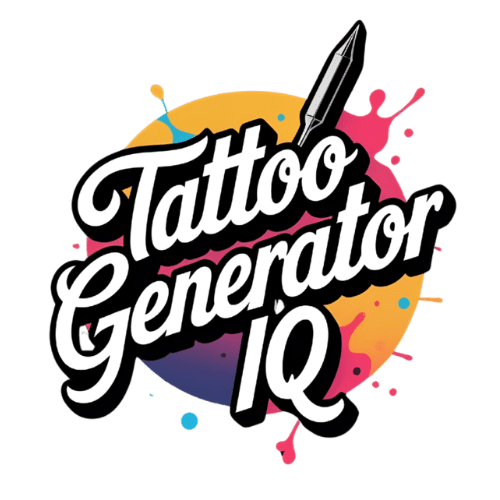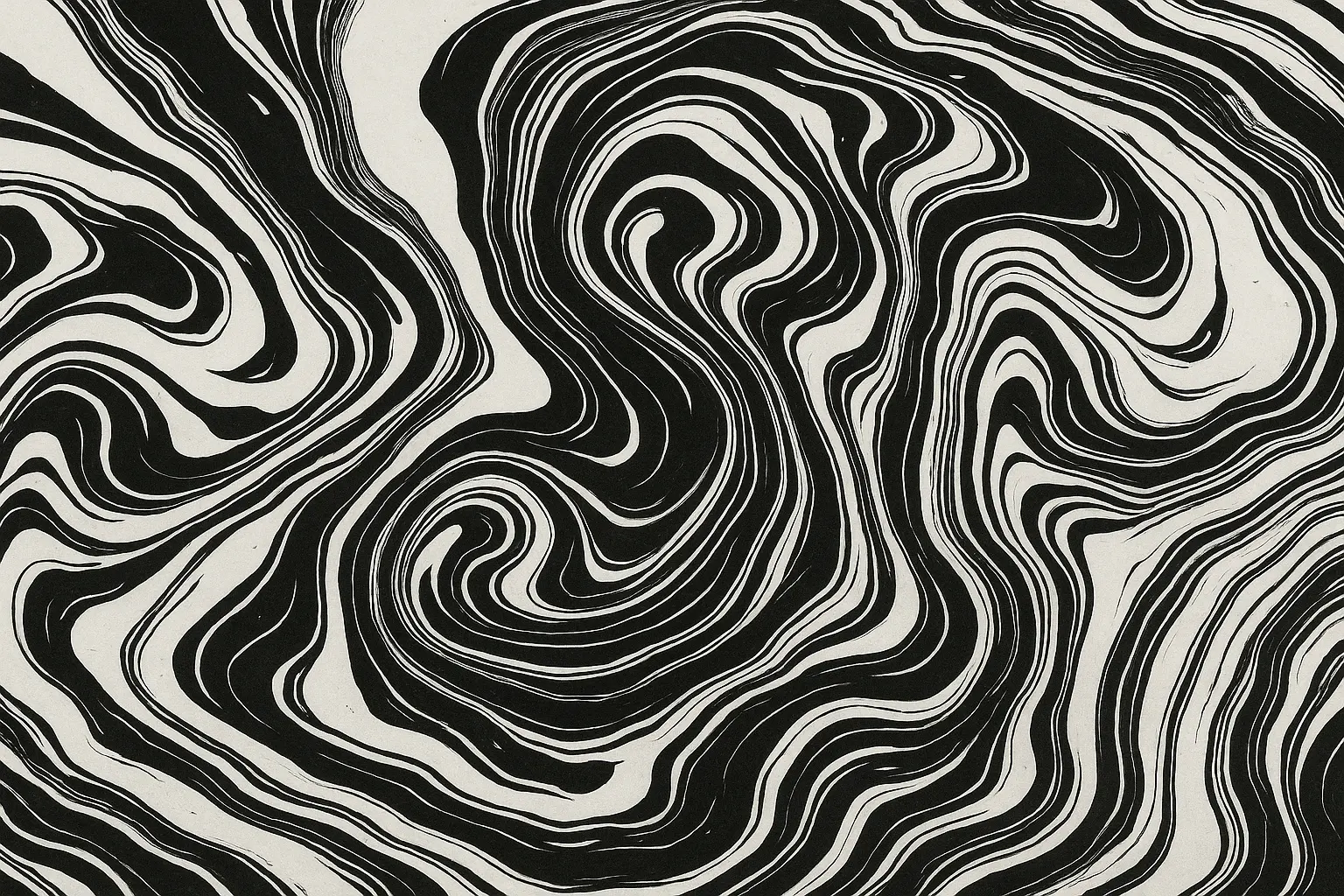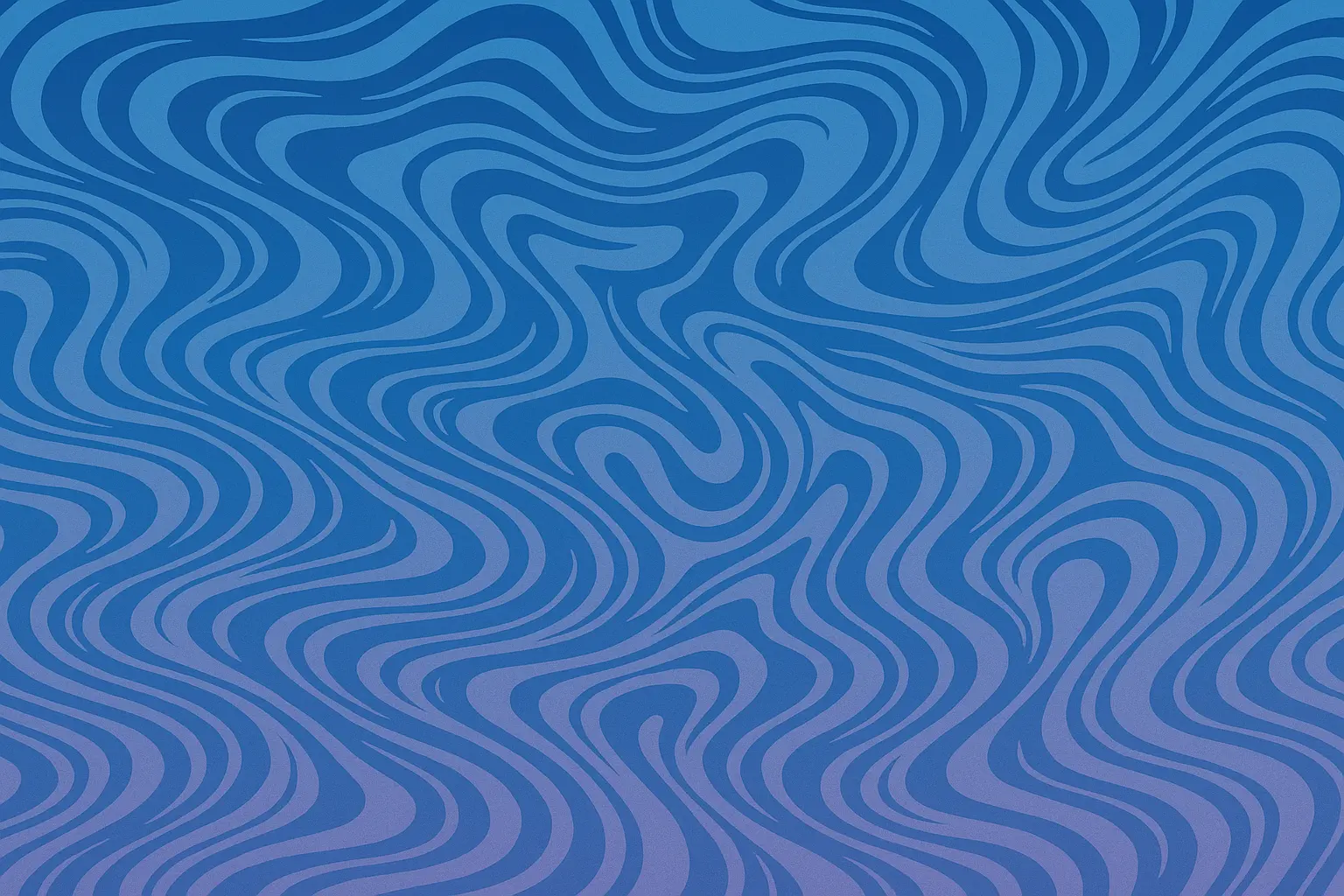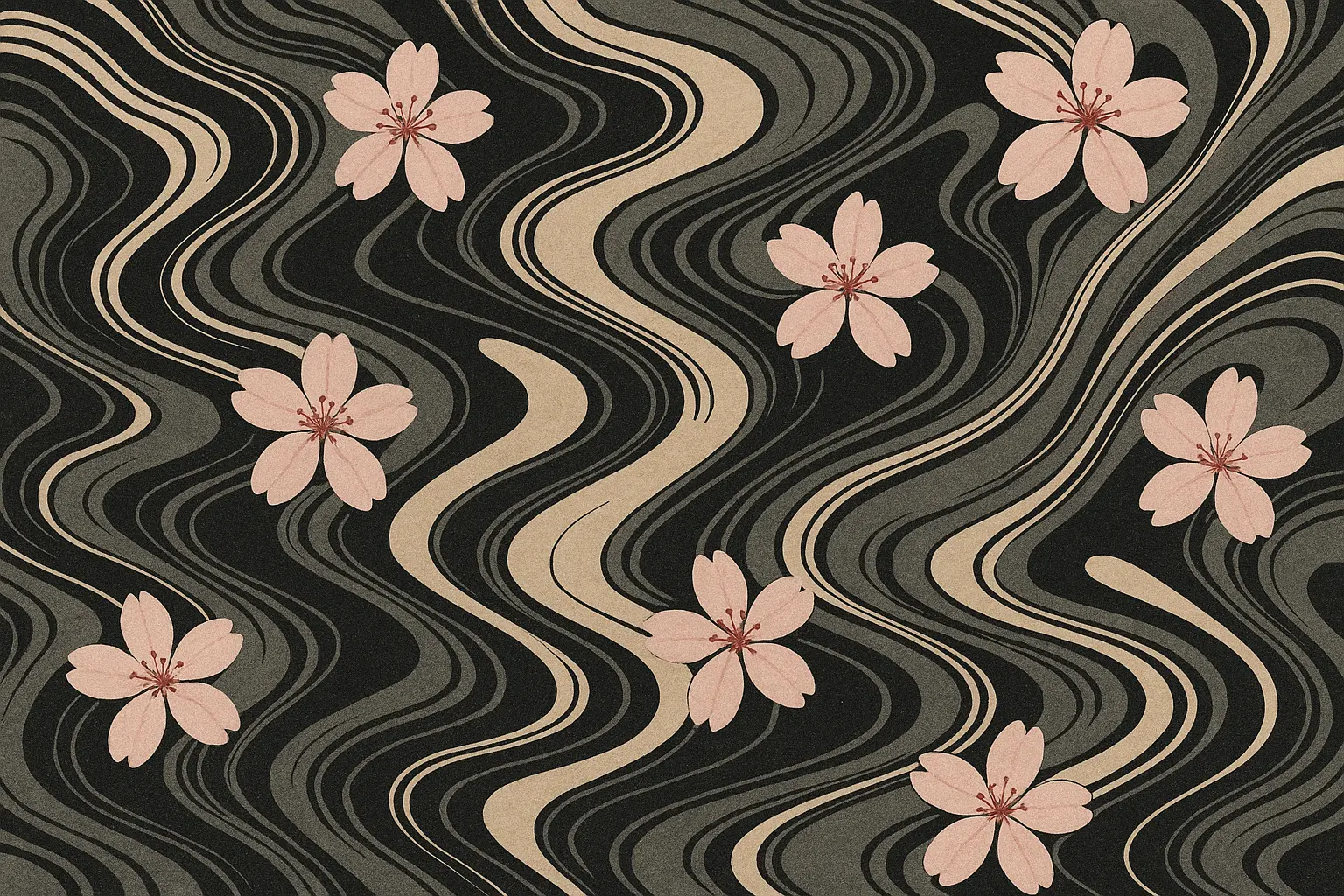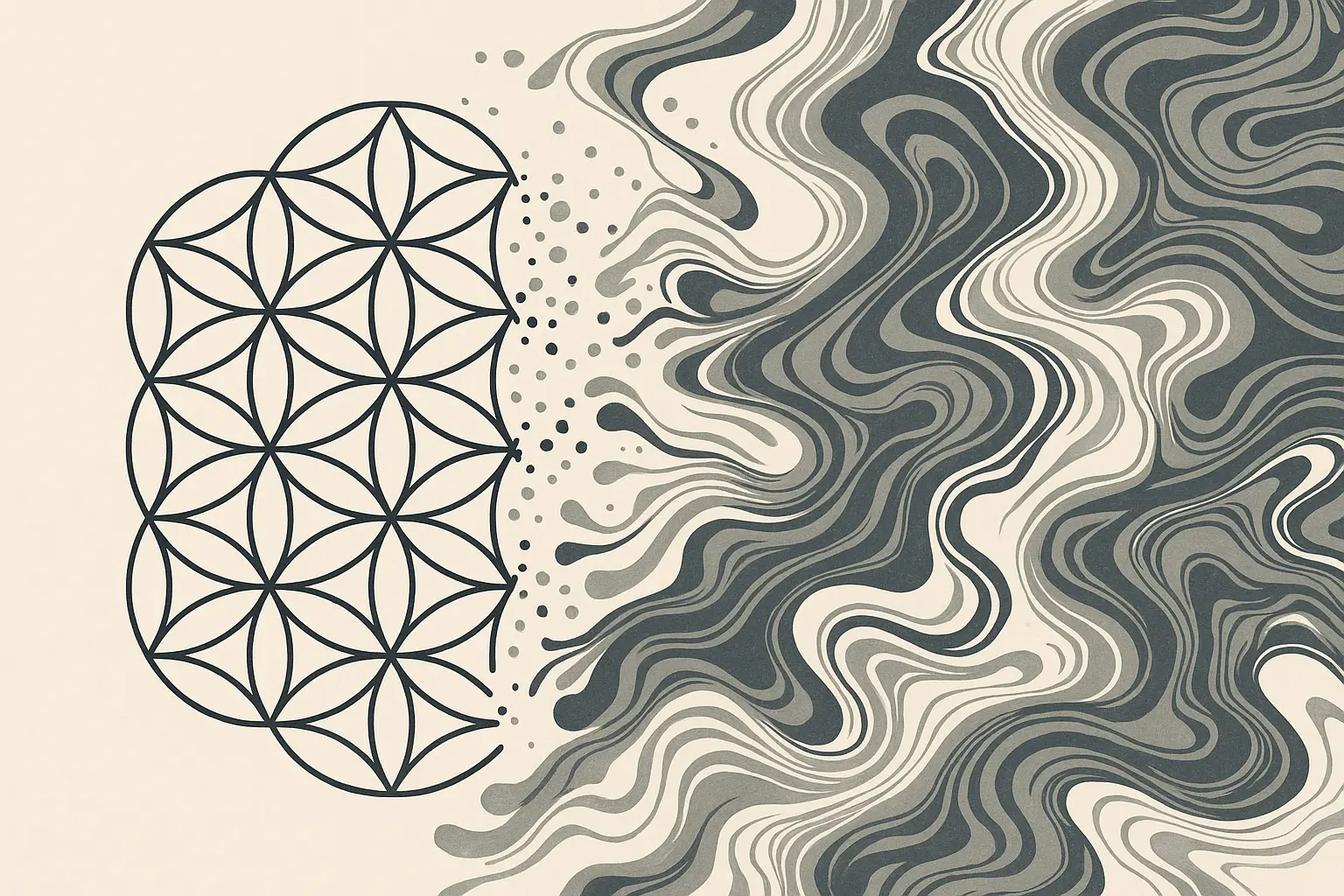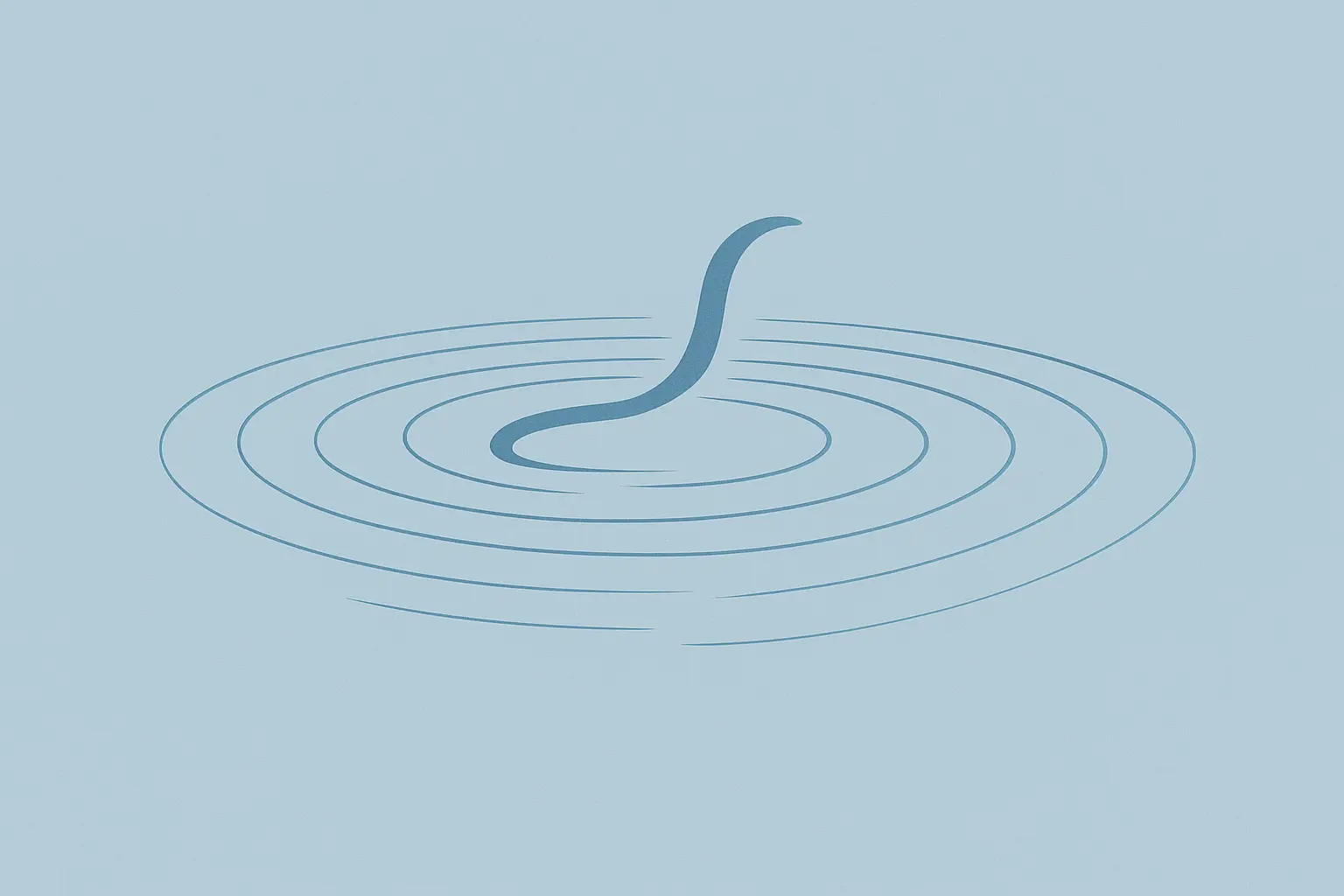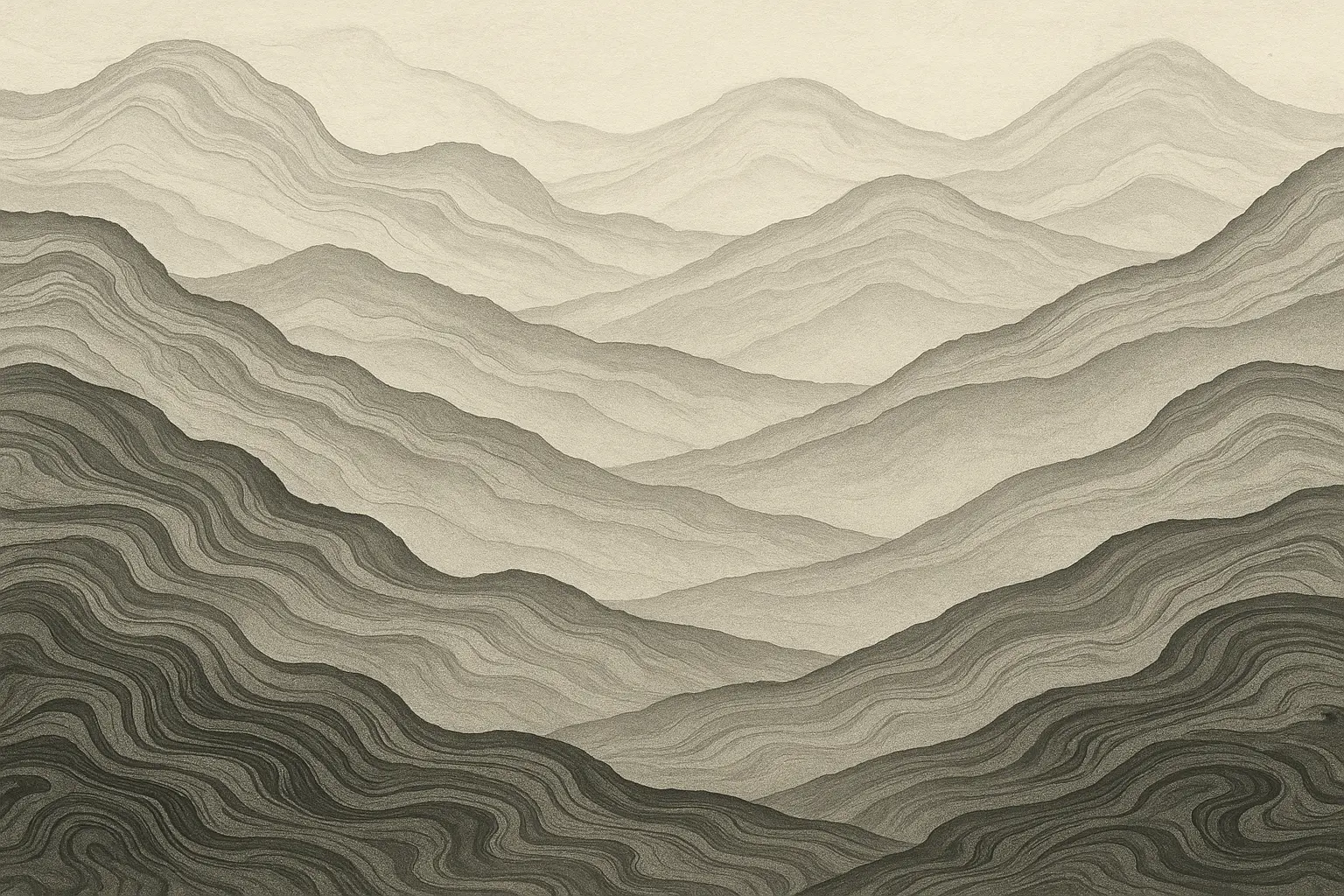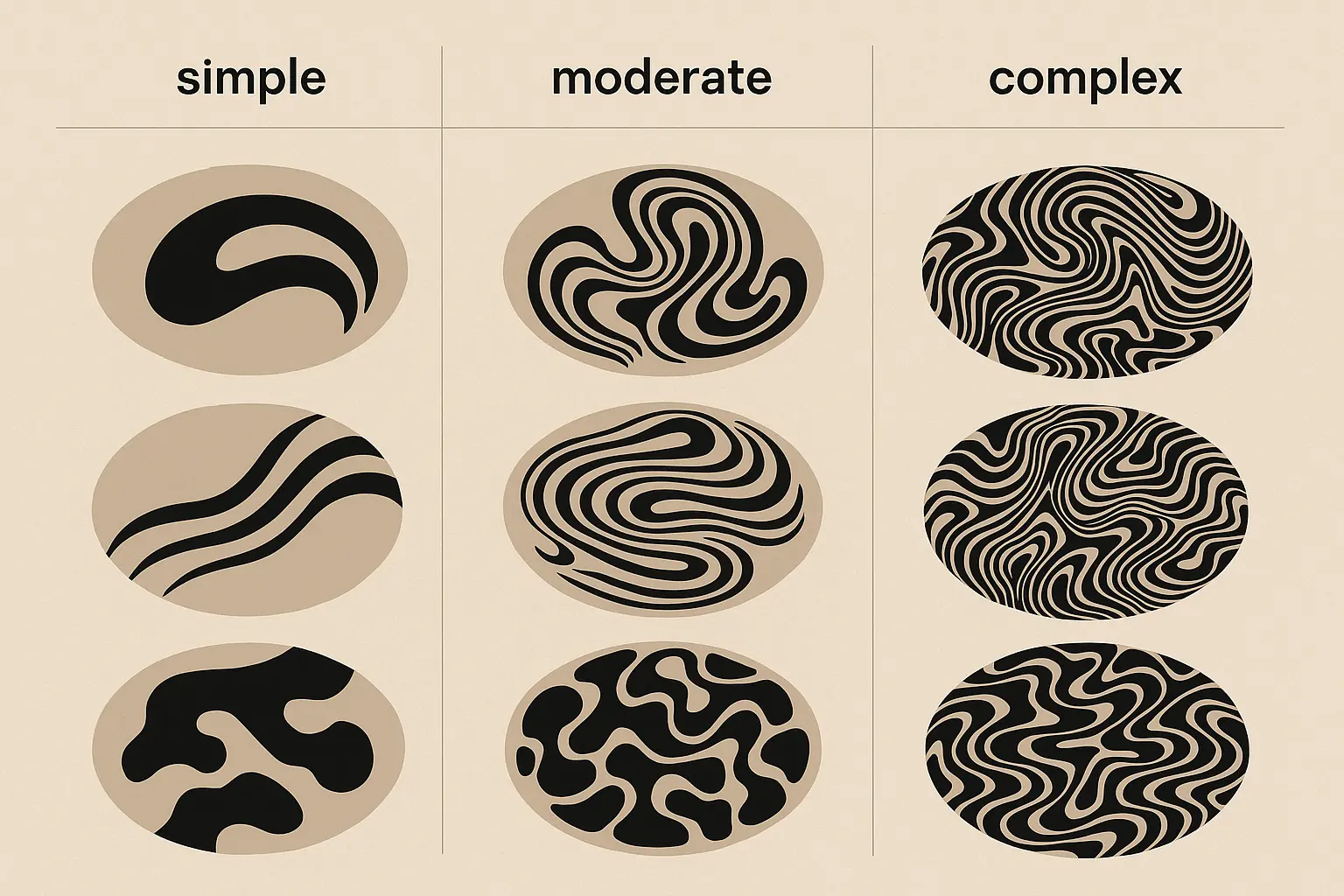25 Stunning Suminagashi Tattoo Designs That Will Transform Your Body Art Journey
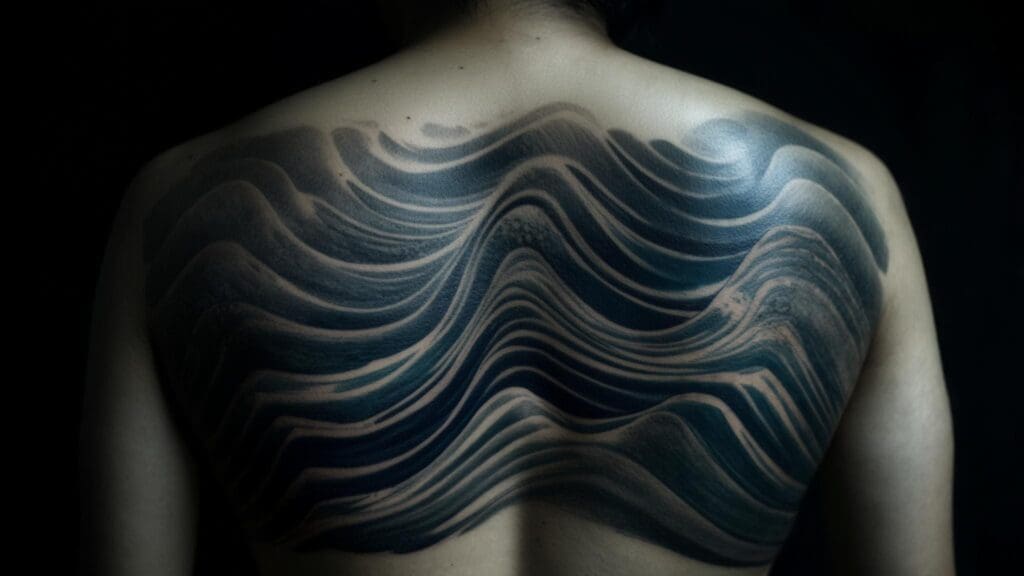
I’ve been seeing these gorgeous suminagashi tattoos everywhere lately, and honestly? I totally get why they’re having such a moment. This ancient Japanese art form – basically “floating ink” on water – has been around since the 12th century, but according to Platinum Ink’s research, it’s absolutely exploding in the tattoo world right now.
I discovered suminagashi during one of those rough patches we all go through – you know, when life feels like everything’s spinning out of control. The moment I saw those dreamy ink patterns dancing on water, something just clicked. Here was an art form that actually celebrates the messy, unpredictable parts of life instead of trying to control them.
Table of Contents
I’ve put together everything you need to know about suminagashi tattoos – from what to expect to finding the right artist. Here’s what we’re covering:
-
What You Need to Know Before You Commit
-
Traditional Black Ink Designs (5 designs)
-
Modern Color Takes (4 designs)
-
Nature-Inspired Combinations (4 designs)
-
Geometric Meets Organic (4 designs)
-
Simple and Clean Versions (4 designs)
-
Go Big or Go Home Pieces (4 designs)
-
Real Talk: How Each Style Actually Performs
-
Matching Your Tattoo to Your Real Life
-
How Tattoo Generator IQ Can Help You Figure This Out
-
Bottom Line Thoughts
TL;DR
Here’s the quick version if you’re in a hurry:
-
These tattoos need space to look good, and you need an artist who actually gets how flowing patterns work
-
Traditional black ink ages the best and stays true to the original Japanese style
-
Color versions are stunning but you’ll be back for touch-ups every few years
-
Mixing suminagashi with flowers or geometric shapes creates amazing combinations but needs a really skilled artist
-
Simple versions capture the whole vibe without the commitment or cost of bigger pieces
-
Huge pieces are incredible but we’re talking serious time and money
-
Think about your job, lifestyle, and how much maintenance you’re cool with
-
This art form has deep cultural roots – it’s not just a pretty pattern, so approach it thoughtfully
What You Need to Know Before You Commit
Look, I’m going to be straight with you about what you’re getting into. Suminagashi tattoos aren’t like getting a simple anchor or rose – they’re complex, and there are some things I wish someone had told me before I started this journey.
How These Tattoos Age (The Real Story)
Here’s the thing about suminagashi tattoos – they depend on those flowing, organic lines and subtle color blends. Fine details will soften over time, and those gorgeous gradients might fade at different rates. But honestly? That’s kind of the point.
Unlike geometric tattoos that can look “off” when lines shift a tiny bit, suminagashi patterns actually get better with a little softening. It’s like they age into themselves.
My friend Jake got his suminagashi piece three years ago, and while some of the finest details have softened, it still looks incredible. The organic flow actually works with the natural aging process instead of fighting it.
|
What Happens |
When It Happens |
How to Plan for It |
|---|---|---|
|
Fine lines get softer |
5-10 years |
Ask for thicker lines from the start |
|
Colors fade at different speeds |
3-7 years |
Budget for touch-ups |
|
Negative space stays crisp |
Pretty much forever |
Use lots of empty space in your design |
|
Organic flows look more natural |
Right away and keeps improving |
Don’t stress about perfect symmetry |
|
High contrast areas stay sharp longest |
10+ years |
Use solid black strategically |
Color vs. Black Ink: What You’re Really Choosing
Traditional suminagashi was just black ink on water, and there’s a reason for that. Black ink is predictable – it ages well, stays sharp, and you won’t be back for touch-ups every few years.
Colors? They’re gorgeous, don’t get me wrong. But my buddy Sarah learned this the hard way. She got a beautiful blue-purple gradient on her forearm, and after three years, the purple faded way faster than the blue. Now she’s spending $200-300 every year just to keep it looking like the original.
Not saying don’t go for color – just know what you’re signing up for.
Size Matters More Than You Think
Here’s why size matters with these tattoos – suminagashi patterns need room to breathe. Cram them into a tiny space and they’ll look messy instead of peaceful. Think of it like trying to fit an ocean wave into a shot glass.
Areas like your back, thigh, or forearm work best for larger pieces because the design can flow with your body’s natural curves. And trust me, when these patterns move with you, it’s like having living art on your skin.
Finding an Artist Who Actually Gets It
Not every tattoo artist can pull off suminagashi. I learned this the hard way when I first started looking around. This style needs someone who understands how water moves, how ink flows, and how to translate that organic chaos onto skin.
Look for artists who do watercolor or abstract work. If they can’t show you examples of flowing, organic patterns, keep looking. And don’t be afraid to ask questions – a good artist will be excited to talk about technique, not defensive about their skills.
The Cultural Thing (Without Being Preachy)
Look, suminagashi has been around for over 1,000 years. It comes from Japanese monks and artists who saw it as a form of meditation, not just decoration. I’m not saying you need to become a Buddhist to get one, but it’s worth understanding that you’re connecting with something deeper than just a cool pattern.
Just keep that in mind when you’re designing yours. It doesn’t have to be traditional, but maybe think about what the flowing, accepting nature of this art form means to you personally.
Maintenance Reality Check
These flowing patterns might need touch-ups more often than simpler tattoos, especially if you go with colors or put them somewhere that gets a lot of sun or friction. Factor that into your budget and time.
But here’s the thing – most people I know with suminagashi tattoos don’t mind the maintenance because they love the design so much. It’s like taking care of something beautiful that happens to be part of your body.
Traditional Black Ink Designs
These are the real deal – staying true to the original suminagashi vibe with just black ink creating all the depth and movement. If you want something that’ll age gracefully and honor the traditional art form, this is your category.
1. Classic Circular Flow Pattern
This is probably what most people picture when they think suminagashi – those mesmerizing concentric rings that look like someone dropped ink into still water. Each ring is slightly different, which is exactly how the real thing works.
What to expect: Medium-sized piece (about 6-8 inches) that works great on your shoulder blade or thigh. Your artist will use different line thicknesses to make it look like real floating ink, with some areas darker and others lighter. Plan on 3-4 hours and around $600-1200 depending on your area.
2. Vertical Cascade Design
Think of ink dropping through water and spreading as it falls – that’s this design. It flows down your spine or forearm like a gentle waterfall made of ink.
What to expect: This is a bigger commitment – we’re talking 12-16 inches running vertically. Perfect for your spine or outer thigh. The flowing pattern follows your body’s natural lines, so when you move, it moves with you. Budget 6-8 hours and $1000-2000.
3. Minimalist Single Drop
Sometimes less really is more. This captures the exact moment a single drop of ink hits water – simple but incredibly powerful.
What to expect: Small and sweet at 3-4 inches, perfect for your wrist, ankle, or behind your ear. Quick session (2-3 hours) and budget-friendly ($300-600). Great if you want to test the waters with suminagashi before committing to something bigger.
4. Abstract Wave Formation
This one captures those horizontal ripples that spread across water when ink hits the surface. It’s like wearing a moment of zen.
What to expect: Medium horizontal piece (8-10 inches) that looks amazing on your ribcage or forearm. The flowing lines create this sense of movement that’s really hypnotic to look at. Plan on 4-5 hours and $700-1400.
5. Organic Mandala Fusion
Here’s where traditional meets traditional – combining the circular structure of a mandala with the flowing chaos of suminagashi. It’s structured but still organic.
What to expect: Larger piece (10-12 inches) that works beautifully on your back or thigh. This one requires an artist who really knows both styles, so expect to pay premium – think $1200-2500 and 6-8 hours of work.
Modern Color Takes
These are for people who want to push boundaries while still respecting the original art form. Fair warning – you’re signing up for more maintenance, but the results can be absolutely stunning.
6. Blue-Purple Gradient Flow
This is like watching deep ocean currents mix with twilight sky. The way blues and purples blend in these patterns is honestly breathtaking.
What to expect: Medium to large piece (8-12 inches) that needs an artist who really knows color theory. The blues and purples will fade at different rates, so budget for touch-ups every 3-5 years. Initial cost $1000-2000, plus maintenance.
7. Earth Tone Organic Spiral
Think autumn leaves floating on a still pond. Warm browns, deep oranges, and golden yellows create this incredibly grounding, natural feeling.
What to expect: Medium piece (6-8 inches) using colors that actually age pretty well compared to other color options. The warm tones work with most skin types. Plan on $800-1600 and touch-ups every 5-7 years.
My friend Michael, who’s a landscape photographer, got this design on his calf after spending months shooting autumn forests. Three years later, he still says it perfectly captures that feeling of peace he found in those quiet woodland moments.
8. Single-Color Blue Meditation
All the depth and movement of traditional suminagashi, but using only different shades of blue. It’s like having a piece of sky or ocean with you always.
What to expect: Larger piece (10-14 inches) that showcases the full range of blue tones from deep navy to light sky blue. Needs an artist who’s really skilled with single-color gradients. Budget $1200-2400.
9. Sunset Reflection Pattern
Warm oranges, soft pinks, and golden yellows that look like sunset light dancing on water. It’s bold but somehow still peaceful.
What to expect: This is a statement piece (12-16 inches) that works best on your back or thigh. The warm colors photograph beautifully but need an artist who understands how these tones work with different skin types. Plan on $1500-3000 and regular touch-ups.
Nature-Inspired Combinations
These designs blend suminagashi with elements from nature, creating pieces that feel like they’re celebrating the connection between art and the natural world.
10. Cherry Blossom Suminagashi Fusion
Delicate sakura petals floating in the ink patterns – it’s like spring captured in a tattoo. Two beloved Japanese art forms coming together perfectly.
What to expect: Medium to large piece (8-10 inches) that needs an artist skilled in both flowing patterns and detailed flower work. The pink petals add just enough color without overwhelming the design. Budget $1000-2200.
11. Lotus Emergence Pattern
A lotus flower seeming to grow right out of the swirling ink – it’s all about beauty emerging from chaos, which honestly feels pretty relevant to life these days.
What to expect: Medium to large design (8-12 inches) where the lotus becomes the focal point while the suminagashi patterns suggest the water around it. Deep symbolism meets beautiful art. Plan on $1100-2000.
12. Bamboo Grove Silhouette
Simple bamboo shadows integrated with the flowing patterns, like looking at a peaceful garden reflected in water.
What to expect: Vertical piece (10-14 inches) that’s perfect for your spine, forearm, or calf. The minimalist bamboo silhouettes work beautifully with the organic flows. Budget $900-1800.
13. Koi Fish Swimming Pattern
Here’s the cool part – the koi aren’t outlined separately. They’re suggested by the natural flow of the ink patterns, like you’re seeing fish swimming through the currents.
What to expect: Large horizontal piece (12-16 inches) that works amazing on your thigh or back. This one needs a really skilled artist who can suggest the fish forms without heavy outlining. Plan on $1400-2800.
Geometric Meets Organic
These designs explore that fascinating tension between structure and chaos, control and flow. Perfect if you’re the type of person who appreciates both order and spontaneity.
14. Sacred Geometry Ink Flow
Traditional patterns like the Flower of Life getting disrupted by organic suminagashi flows. It’s like watching perfection learn to dance with chaos.
What to expect: Medium to large piece (10-12 inches) that balances mathematical precision with organic randomness. Needs an artist who can handle both geometric accuracy and fluid patterns. Budget $1200-2500.
15. Hexagonal Grid Disruption
A perfect grid getting beautifully broken by flowing ink patterns. It’s like nature saying “hey, rigid structure, let me show you something better.”
What to expect: Medium piece (8-10 inches) that uses negative space really effectively. Great symbolism if you’re someone who’s learned to embrace imperfection. Plan on $800-1600.
16. Spiral Fibonacci Integration
Mathematical spirals blending seamlessly with organic flows. It looks both calculated and completely spontaneous, which is kind of mind-bending.
What to expect: Medium to large design (8-12 inches) that incorporates those golden ratio spirals you learned about in math class, but makes them feel alive and flowing. Budget $1000-2000.
17. Crystalline Structure Dissolution
Sharp crystal forms dissolving into flowing patterns – perfect if you’re going through a major life change or learning to be less rigid with yourself.
What to expect: Large piece (10-14 inches) showing that transformation from solid structure to organic flow. Needs advanced shading skills to show the dissolution effect. Plan on $1300-2600.
Simple and Clean Versions
Sometimes the most powerful statements come through restraint. These designs prove you don’t need complexity to capture the soul of suminagashi.
18. Single Breath Pattern
Like someone breathed gently on water and you captured that one perfect moment. Ultra-minimal but incredibly meaningful.
What to expect: Tiny but mighty (2-4 inches) perfect for your wrist, ankle, or behind your ear. Quick session (1-2 hours) and budget-friendly ($200-500). Great for people who want the essence without the commitment.
19. Dual Ink Drop Interaction
Two ink drops meeting and creating something beautiful together – perfect for couples or anyone who appreciates how different elements can create magic when they connect.
What to expect: Small to medium piece (4-6 inches) showing where two different flows meet and interact. Emma and her partner got matching versions on their wrists – when they hold hands, the patterns align to show the complete interaction. Budget $400-800.
20. Linear Flow Abstraction
Taking suminagashi down to its essential flowing lines. It’s like the haiku version of this art form – saying more with less.
What to expect: Medium linear design (6-8 inches) perfect for your forearm or calf. Uses different line weights to suggest depth without complex shading. Budget $500-1000.
21. Negative Space Meditation
This one’s clever – it uses your skin tone as part of the art, with minimal ink defining the boundaries of implied flow patterns.
What to expect: Medium to large piece (8-10 inches) where what’s NOT inked becomes the main visual element. Needs an artist who really understands negative space. Budget $700-1400.
Go Big or Go Home Pieces
These are for people who want to make a serious statement. We’re talking major time, money, and commitment, but the results are absolutely incredible.
22. Full Back Landscape
A complete back piece using only suminagashi patterns to create something that looks like a landscape. It’s abstract but somehow you can see mountains, sky, water – your brain fills in the details.
What to expect: Full back coverage requiring multiple sessions over 6-12 months. We’re talking 20-30 hours of work and $3000-6000. This is a lifestyle choice, not just a tattoo.
23. Sleeve Spiral Composition
A full sleeve where the patterns spiral around your arm, creating movement that works with how you naturally move and gesture.
What to expect: Full arm coverage designed to look amazing from every angle. 15-25 hours of work, $2500-5000. The spiral motion makes your arm movements look like you’re conducting some invisible orchestra.
24. Torso Flow Integration
Patterns flowing across your chest and stomach, working with your body’s natural contours and even your breathing.
What to expect: Large torso piece (14-18 inches) that moves with you when you breathe. Requires understanding of anatomy and how the design will look during natural body changes. Budget $2000-4000.
25. Leg Cascade Masterpiece
A full leg design showing patterns cascading from thigh to ankle like a waterfall made of ink.
What to expect: Full leg coverage using gravity-inspired flows. Multiple sessions, 18-28 hours total, $2800-5500. When you walk, the patterns create this amazing sense of movement.
Real Talk: How Each Style Actually Performs
Here’s the honest breakdown of what you’re getting into with each category:
Traditional Black Ink: Super low maintenance, ages beautifully, most authentic to the original art form. Downside? Some people find them a bit boring compared to color versions.
Modern Color Takes: Absolutely stunning, great for creative types, really makes a statement. But you’re signing up for touch-ups every few years and higher maintenance costs.
Nature-Inspired Combinations: Beautiful symbolism, connects you to natural cycles, honors multiple art traditions. Requires finding an artist skilled in multiple techniques, which can be pricier.
Geometric Meets Organic: Perfect for analytical minds who also appreciate chaos, creates fascinating visual tension. Needs an artist who can handle both precise geometry and organic flow.
Simple and Clean: Maximum impact with minimal commitment, ages really well, budget-friendly. Might feel too simple for people wanting something more complex.
Go Big or Go Home: Incredible artistic impact, lifetime centerpiece, conversation starter everywhere you go. Major time and money investment, limited clothing options.
Matching Your Tattoo to Your Real Life
Let’s get practical about how this decision fits into your actual day-to-day existence.
Work Considerations
Work in an office? You’ll want something you can easily cover with business clothes. The Single Breath Pattern behind your ear or a Linear Flow on your forearm works perfectly – meaningful to you, invisible to your boss.
Creative job? Lucky you – you can probably go bigger and bolder. My friend who works in graphic design has a gorgeous Botanical Integration piece on her forearm that clients actually compliment.
Still living with parents who’ll freak out? Maybe start small and see how it goes. You can always add more later.
Budget Reality Check
Small minimalist pieces: $200-600
Medium traditional designs: $600-1500
Large color pieces: $1200-3000
Full masterpieces: $2500-6000+
And remember – color pieces need touch-ups every few years, so factor in ongoing costs.
Lifestyle Matching
Active lifestyle with lots of swimming/sun exposure? Stick with black ink and areas that don’t get constant sun.
Meditation or mindfulness practice? Traditional designs really enhance that contemplative mindset.
Going through major life changes? The transformation themes in geometric fusion or crystalline dissolution designs might really resonate.
First tattoo ever? Start with something smaller in a less painful area. Your ribs might not be the best place to discover you don’t handle tattoo pain well.
How Tattoo Generator IQ Can Help You Figure This Out
Here’s the thing about suminagashi tattoos – they’re really hard to describe in words. You know that feeling you want, but explaining it to an artist can be frustrating.
That’s where Tattoo Generator IQ becomes incredibly helpful. The AI actually understands the relationship between flowing water, organic patterns, and how they translate to skin. You can experiment with different styles instantly instead of trying to explain “you know, like water, but more flowy” to confused artists.
The platform helps with the cultural understanding too – it’s trained on authentic suminagashi imagery, so you’re getting designs that capture the real essence, not just generic watercolor effects.
Plus, you get detailed references that help bridge the gap between your vision and your artist’s technical skills. No more hoping they understand what you mean by “organic flow patterns.”
Ready to explore what’s possible? Visit Tattoo Generator IQ to start visualizing your suminagashi tattoo ideas and get professional-quality designs that actually capture this ancient art form.
Bottom Line Thoughts
Look, choosing a suminagashi tattoo isn’t just about picking something pretty for your skin. You’re connecting with an art form that’s all about accepting imperfection, going with the flow, and finding beauty in the unexpected.
Whether you go with a simple Single Breath Pattern or commit to a full back masterpiece, the most important thing is that it feels right for where you are in your life right now.
Don’t rush this decision. Visit multiple artists. Ask to see healed photos that are at least two years old – if they can’t show you any, that’s a red flag. And trust your gut about the artist’s personality too. You’ll be spending hours with this person, so make sure you actually like them.
The best part about suminagashi? It teaches you that imperfection is beautiful. Your tattoo will change and age over time, just like you will. That’s not a bug, it’s a feature.
And hey, if you change your mind later? That’s what laser removal is for. But honestly, most people I know with suminagashi tattoos still love them years later. There’s something about carrying that reminder of flow and acceptance with you that just works.
Just do your homework, find an artist who gets it, and don’t feel pressured to go huge on your first one. Start with what feels right, and you can always add more later.
